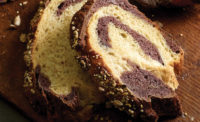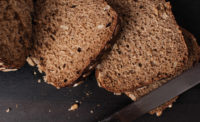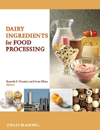Grain diversity helps build a bigger toolbox for bakers

It has never been a better time to be in artisan baking. We are living in a time of heirloom wheat rediscovery and renewed appreciation for ancient grains. Not only are more heirloom wheats coming back into style, but there is also a great range of ancient grains available—and now in more formats. Bakers are beginning to have a much greater understanding of how combining several grains and different grain formats can achieve different results and exceptional functionality in baking.
One of the great things about artisan bread and pastry baking is that bakers work in smaller batches and can experiment with more changeovers, more varied fermentation times and more inclusions. This is where ancient grains can add so much to the baker’s toolbox. Each grain brings a different texture, granular size, flavor and color to baked products, from boules to scones and rustic loaves. I love to play around with how the flavor notes in teff might complement different herbs and spices, such as sage, in a dough, finished with toasted pumpkin seeds on top. Many grains have more than one color, like the purple and black barleys, and each one complements herbs, nuts, cheese, spices and sweeteners slightly differently. Rye is really popular right now and is typically paired with caraway seeds—but it’s also great with dill, onion and fennel.
Bakers love heirloom wheats because they bring unique flavors, textures and results to baking functionality, such as loaf volume, chew, crust and crumb. These qualities also mean that bakers need to take some extra care in working with the heirlooms. Older wheat varieties often have less gluten strength, which requires bakers to make slight adaptions to every step of the baking process. The dough has to be treated more gently in dividing and shaping. It might need more folds and time in the fermentation process. Proofing times can vary, and bakers might want to use a faster heat transfer, depending on what they are trying to achieve in terms of volume, crust, texture, lightness or chewiness.
In terms of classic pastry baking, we’re finding that the buttery, delicate qualities of White Sonora wheat is great in croissants and other kinds of flaky, buttery pastry. It’s also great for flatbreads, cheese breads, French country boules, rolls and crackers. Consumers are also interested in heartier, rustic desserts, which means spelt and other heirloom wheats and ancient grains can find a place in pies and cookies.
We are seeing more bread styles bringing new interest to the restaurant table, including sweet or savory monkey breads, pull-apart loaves, stuffed breads, and sharable breads with dips. These trends fit into what restaurants want to offer in sharable, social eating environments.
We also have more grain ingredient formats today. Bakers can play around with the particle sizes of whole, cracked and flaked grains. Flaked grains hydrate more quickly, but maintain a bigger appearance in grain size. Individually quick-frozen (IQF) grains are already hydrated and fully cooked, so they can save the step of presoaking whole grains. For texture without nuts, crisps can bring new levels of crunch to baking.
People want food made with whole ingredients and natural flavors, and grains are delivering right now. Current consumer health and wellness trends include organic and clean ingredients, as well as sprouted and ancient grains. There is also more interest in higher-protein grains for sustained energy, and in baking with a combination of pulses and grains to increase protein and overall nutrition. Digestive health is also a hot topic, and consumers are hearing more about how the composition of older wheats and grains like spelt might be easier to digest. Combining barley, oats and rye can create a loaf that is lower in sugar and fat, but higher in beta glucan, which can play a role in gut health.
I like to compare the way bakers are using varied grains and wheat to the way microbrewers have worked with different grains, fruits, spices and other flavoring elements to come up with unique tastes, aromas and colors of beers, ales, IPAs, etc. In fact, one of the best way to experiment with ancient grains is to use blends and mixes to achieve the right combination based on the flavors, functionality, gluten and protein values you want in a finished product.
Looking for a reprint of this article?
From high-res PDFs to custom plaques, order your copy today!









